#this comic is done but itd be a good idea to like. not lose my ideas for them LMAO
Explore tagged Tumblr posts
Text
My followers, decide for me yet again. You have like 5-10 minutes to vote before I go with whatever is winning.
#ramblings#i could finish the drawing but i feel like finishing one of the writing things i have#tbh i could work on the smoke breaks fic too i have that one moved onto docs as well. but i wanna focus on getting these fuff shits done#first. and then i can worry abt other fanfics#i should probably note down the ideas i have for the next 2 fics i work on tbh. like im not starting any more writing until#this comic is done but itd be a good idea to like. not lose my ideas for them LMAO
9 notes
·
View notes
Note
Zevistair and Alistair/Anora for the ship bingo! (Also hi!!!!)
OOOOH VERY INTERESTING ONES
zevistair:

this one is a Very Recent consideration/revelation for me and honestly. kinda obsessed and i wish i had been into it when i was first playing origins a couple years ago/makes me want to start a new file to Observe them more
bulleted thoughts:
i love the idea that their character arcs are sort of going in...opposite directions? if that makes sense? like despite the fact they have similar brands of tragic backstory, the actual circumstances of the tragic backstory diverge such that zev is recruited into an order that makes him distrust people and alistair is recruited into an order that, in his mind, is the only people he CAN trust, but in the game itself zev is "softening"/opening up and alistair (in more interesting characterization directions lol) is hardening/losing his naivete its So Cool
attempted murder is ? because that's more the warden than alistair but it's close enough that i think it'd be a bit for them LMAO
the specific combo of zev being super forward sexually/a bit harder to reach romantically (iirc i need to replay origins Stat) and alistair being very forward romantically but inexperienced sexually is...Very Good for ship dynamic/conflict purposes...
besides that tho they're just silly. like they both make jokes and do the hahas. what more could you want
alistair/anora:

so full disclosure i've never done a playthrough of origins (or at least not gotten to the landsmeet with a warden that had this as the plan of action) with alistair and anora co-ruling which may be coloring my opinions A Lot but i'm glad you asked about it because i've been meaning to think up a scenario that i'd want to use it for (ive kept alistair as a warden, married him myself, and had him rule alone hardened fwiw)
my ideal scenario/conception of this is absolutely a like. starts literally Zero romantic interest. probably some degree of contempt, even. but through a comical series of events they end up doing pretty much everything couples do besides really "having feelings" in such a way that they're like. ticking off boxes on the Businesslike Relationship List and Getting a Good Grade in Marriage. like ok honey great work out there today. we had a functional discussion about what dishware we want to purchase, planned our next ten years of children, and practiced a polite amount of public affection while negotiating with a diplomat. here's what's on the docket for tomorrow. and through that practicality they become fond for each other? sort of? idk i still think lingering contempt is a Hallmark of their vibes and what makes it work for me as a concept
i can...sort of see them developing proper romantic feelings for each other on like Year Fifteen of Marriage maybe but tbh its more a hard-earned-despite-the-circumstances-respect flavor of romance like. you are a Stable Feature in my life. and not so much "storybook" romance which tbh would be really interesting for a character like alistair to have to work through considering How He Is in his warden romance (and iirc you Have to harden him to even do this so itd be...neat to dovetail that with that element of his development specifically re: i have to call up the desire for romance i had before i Lost My Innocence as a mask for the public to idealize re: our marriage/rule and its legitimacy but also i do not believe in it anymore. we love a lil cognitive dissonance)
probably obvious from how i talk about it but tbh not something i "ship" LOL not even in a "they're so toxic it's fun" type of ship way...idk they are a narrative device to me. the most fun they can have is a divorce arc
tysm this was very fun!! i think i'm going to go find the mahariel save file i started a bit ago and hope i remember what i was doing bc that warden would 100% shove alistair and anora together LMFAO
#ammoniteflesh#answered#hoping i didnt get details wrong bc im not prepared to fight for my life re: dragon age discourse. fuck it not even tagging it LMAOO
2 notes
·
View notes
Text
Exploring the U.S. by RV: The price of adventure
Shares 352 Two years ago today, Kim and I returned to Portland after fifteen months traveling the United States in an RV. Believe it or not, Ive never published an article about the trip and how much it cost. Although we kept a travel blog for most of the adventure (including a page that documented our expenses), Ive never gathered everything into one place. Until now. Today, I want to share just how much we spent on the journey and some of our favorite stops along the way. It seems like the perfect post to celebrate the start of summer, dont you think? The Lure of Adventure All my life, Ive wanted to take a roadtrip across the United States. When I was young, I was lured by the adventure. I wanted to climb mountains, swim rivers, and explore canyons. The older I got, the more fascinated I became by the countrys regional differences. The U.S. is huge, a fact that most foreign visitors forget. Most American citizens dont even realize how big the country is. I wanted to see and experience it all. Although Ive dreamed of a cross-country roadtrip, its never been practical. As a boy, my family was poor. My parents didnt have money for something like this. As a young adult, I couldnt afford it either. For a long time, I was deep in debt. Besides, where would I find the time? I had to work! To top things off, my wife had zero interest in driving cross country. But in my forties, a curious set of circumstances came together to move my epic roadtrip from dream to reality. One day in early 2014, my girlfriend Kim asked me out of the blue, What do you think about taking a cross-country roadtrip? What did I think? Hell yeah! is what I thought Making a Plan As Kim and I began to discuss this adventure, our biggest concern was money. As a financial writer, Im acutely aware that every dollar I spend today is roughly equivalent to seven dollars I could have in retirement. Every day, I preach the power of saving. I wanted to keep our trip as cost-effective as possible. (Besides, Kim would have to quit her job as a dental hygienist in order to travel a huge financial sacrifice.) My goal was to keep our costs under $50 per person per day. In fact, I had high hopes we could do the trip for $33 per person per day (for a total of $24,000). But the U.S. is expensive. How could Kim and I make this happen? From the start, we knew hotels were out. Even cheap lodging would be far too expensive for us to stay within budget. Personally, I liked the idea of bicycling across the country like my friends Dakota and Chelsea have done. Kim wasnt keen on the idea. (Nor was she willing to make the trip by motorcycle despite being a die-hard Harley girl.) After a lot of research, and after talking with Chris and Cherie from Technomadia, I came to a conclusion: The best balance of cost and comfort would come from crossing the country in an RV. With this bare outline of a plan, the true trip prep began. Searching for Bigfoot After deciding to travel by RV, there were more questions to answer. Neither of us had experience with recreational vehicles. Among other things, we needed to figure out: Should we buy a truck and a trailer?Would it be better to buy a motorhome and tow my 2004 Mini Cooper?What about new or used? With used, you never know what youre getting. But a new RV costs $80,000 or more and loses value quickly.How much space did we need? What kinds of amenities? After crunching the numbers, there was an obvious best choice for us. If we bought a used motorhome, we could tow a car we already owned while (we hoped) avoiding a big hit from depreciation. In fact, if we were diligent every step of the way, it might even be possible to resell our RV after the trip and recoup most of what wed paid for it! We spent the autumn of 2014 patiently sifting through Craigslist ads for used motorhomes. We visited dealerships. We attended the local RV Expo. We walked through dozens of models searching for the right fit. Some were too long. Some were too short. Some were too fancy. Many were run-down and in a state of disrepair. Finally, in early January 2015, we found the perfect rig: a 2005 Bigfoot 30MH29RQ. (Translation: A 29-foot motorhome with a queen bed in the rear.) The owner wanted $38,000 for it a fair price. He wouldnt budge when I tried to negotiate, but I was okay with that. My research revealed he was actually selling a slightly better model, one worth a few thousand dollars more than he was asking. We bought it. [embedded content] Over the next two months, Kim and I prepped Bigfoot for departure. We spent $2000 making minor repairs and installing a towbar on the Mini Cooper. We cleaned the motorhome from top to bottom. We took weekend test trips to RV parks around Oregon and Washington. When all was said and done, wed invested $40,000 to get our caravan ready for the road. Into the West Kim and I left Portland on the morning of 25 March 2015, my forty-sixth birthday. We sped through Oregon we love the state, but were both familiar with it and entered northern California. We spent our first week on the road exploring the Redwoods and weaving through wine country. Along the way, we got a crash course in driving a motorhome. Near Cloverdale, California we took a wrong turn onto a cliff-side gravel road. We stopped immediately. Good thing, too. Turns out a week earlier some other poor soul had driven his RV over the side of the cliff. East of Sacramento, we took another wrong turn and found ourselves driving down a narrow dike road during rush hour while high winds buffeted the RV. Very scary. At times we felt like Lucy and Desi in The Long, Long Trailer, but after a couple of weeks Kim and I had learned how to handle our motorhome, both on the road and off. [embedded content] Early in the trip, our expenses were out of sight. We ate out too often. We bought too much wine. We did too many touristy things without searching for discounts. We rationalized that since we were visiting all of these new places (and might never return), we might as well pay to experience them to the fullest. This was a once-in-a-lifetime adventure, after all. The problem, of course, was that lots of fun costs lots of money. Ten days into the trip, our average spending was over $120 per day (or over $60 per person per day) almost twice what wed hoped to spend. Yikes! We tightened the purse strings. We stopped eating out so much and cooked in the motorhome. (We cook a lot at home normally, so this wasnt a tough transition.) We bought a National Parks pass, perhaps the best purchase of our entire trip. (For an $80 one-time fee, you get one year of unlimited access to all sorts of government-owned sites.) We learned to entertain ourselves at night with books and boardgames and a hard drive filled with old movies and an iPad filled with comic books. During our 33 days in California, we marveled at the states vast variety of terrain. We drove through forests and deserts, skirted ocean cliffsides and walked across mountain streams. We hated L.A. traffic not recommended when youre in a motorhome towing a car but enjoyed almost everything else. We loved Arizona even more. Maybe we had low expectations, but we were blown away by the magnificent scenery of the Grand Canyon state. For nineteen days, we basked in the warm spring sun and admired the colorful rock formations. It was in Arizona that we discovered the joys of drycamping (or boondocking). For the first seven weeks of our trip, we mostly stayed in RV parks and campgrounds. At $20 to $50 per night (with the average park costs around $35), lodging was our biggest expense by far. Drycamping costs nothing. All you do is find a spot where you can legally park for the night National Forest land, a friends driveway, certain businesses and casinos and set up camp. You dont have access to electricity or fresh water, but thats okay. The beauty of an RV is that its self-contained. (Our Bigfoot had a generator for electricity and a 63-gallon freshwater tank.) After boondocking only once during our first 50 days on the road, we managed to live off the grid for 33 of the next 80 nights. Once we began pinching pennies, our travel costs plummeted. We werent spending $120 per day anymore. Our average daily spending fell to $50, which lowered the trip average to about $80 per day. A Costly Repair With all this frugality, did we feel like we were depriving ourselves? Not at all! As we made our way from Arizona to Utah to Colorado, we found we could still afford wine and an occasional restaurant meal. Plus, we were paying to do a lot of touristy things, such as soak in the hot springs in Ouray and ride the narrow-gauge train from Durango to Silverton. At the end of May, we stopped for a week to visit family and friends near Denver. During this break, our RV costs dropped to zero no fuel or lodging expenses while we stayed with Kims mother and hung out with Mr. Money Mustache which allowed us to spend a little more on fun. Good thing too because Fort Collins has a great beer scene. We hit the road again in early June, making our way into Wyoming to visit Yellowstone and the Tetons. We zipped over to Idaho to spend time with Kims father in Sun Valley. From there, we drove north into Montana to lounge around Flathead Lake and explore Glacier National Park. Costs stayed low as we crossed Montana to enter the beautiful Black Hills of South Dakota. After celebrating Independence Day in Deadwood, our average daily spending for the trip was about $84. We felt good about that number. Itd be nice if it were lower, but $42 per day per person seemed reasonable. At that rate, the trip would cost us $30,000 for the entire year. On July 8th, the tenor of our trip changed. So did our costs. We were cruising across the vast emptiness of central South Dakota when the motorhomes engine overheated. We pulled off to give it a rest. The oil level looked fine, but I added more just in case. It didnt help. An hour down the highway, the engine seized up completely. Turns out Bigfoot had spun a bearing and the engine was toast. (Also turns out that spun bearings are not uncommon with this particular engine.) Unfortunately, we were in the middle of nowhere. The nearest town was Plankinton, South Dakota (population 707). Fortunately, the folks in Plankinton were friendly. The owners of the local garage diagnosed the problem and ordered parts. Meanwhile, we got to know the owners of the only RV park in town. We spent ten days drinking beer with Plankintonians while exploring nearby attractions such as the Corn Palace and the real-life homestead of Laura Ingalls Wilder. In the end, the engine repair cost $7751.39. Ouch! We did not count this against our daily trip budget but instead factored it into our overhead, much like we had with the purchase price of the RV. (You might choose to account for it differently.) The Expensive East When the new engine was ready, we waved good-bye to our new friends in Plankinton. We drove through Minnesota to Wisconsin, where we spent a week in the Great North Woods. (At the recommendation of world traveler Gary Arndt, whom we had lunch with near Milwaukee, we took a boat ride out to view the amazing Apostle Islands.) After eating our fill of Wisconsin cheese, we crossed into Michigans upper peninsula and then drove south to Indianas Amish country, where we rested for a week. (We also took the time to dart into Chicago for an overnight trip.) From there, we moved to Indianapolis and Cincinnati. As we made our way east, we noticed some interesting changes. First, there were fewer opportunities for boondocking. Theres less government-owned land in the East than there is in the West. (The western U.S. is largely government land, which means lots of places to camp for free.)Second, while gasoline prices were lower in the east, everything else was more expensive. RV parks were more expensive. Groceries were more expensive. Beer and wine were more expensive. Restaurants, especially, were more expensive. Our average daily spending started to creep upward. By the time we reached Ohio in mid-August, we were shelling out $120 per day again. After 150 days on the road, the average for the entire trip was $93.48 per day (or $46.74 per person). By this point it was clear that we couldnt spend a year on the road for our initial $24,000 budget. (You might, but we couldnt. Not while enjoying the lifestyle we wanted.) Even $30,000 for the year seemed unlikely. We revised our budget upward to $36,000 (or about $50 per person per day) not counting the expensive engine repair. We had plenty in savings, so we could afford to stretch some, but we still wanted to spend as little as possible. From Cincinnati, we traveled to beautiful West Virginia, then north to Cleveland. After that, we hopped over to Niagara Falls, where we camped for a few days at a winery. (We helped bottle brandy and bought a few bottles of wine in exchange for firewood and a place to park.) Stopping in Savannah During September, we sort of lost our steam. The enthusiasm wed had at the start of the trip petered out. Instead of exploring Pennsylvania, New Jersey, and North Carolina, we holed up in the RV and worked. It might sound crazy, but we missed being productive and making money! Being hermits saved us money, of course, but we felt like we were wasting an opportunity. After much discussion, we decided to take a break. We spent a week driving around the eastern seaboard, looking for a place to park for the winter. We fell in love with Savannah, Georgia, so we rented a condo and put the RV in storage. For six months, we lived a relatively normal life. Kim found full-time work as a dental hygienist, and I launched Money Boss (which Ive been folding into Get Rich Slowly since re-purchasing this site). Our six months in Savannah were interesting. I had never lived outside of Oregon, so I suffered some culture shock. I always say that Im relatively conservative for the Portland area but that still makes me pretty liberal for anywhere in the southeastern U.S.! While in Savannah, we didnt just work. We made sure to have some fun too. Over Christmas, we flew to New York City for a long weekend, where we got to hang out with some of our favorite money bloggers. In February, we took a couple of weeks to tour the state of Florida, from Jacksonville to Tampa to Miami to Key West to the Kennedy Space Center. Important note: By this time nearly one year into our trip Kim and I had both started packing on the pounds. Sad but true. We were eating great food and drinking great beer everywhere we went, and we were out of our exercise routine. Not good. After returning from Florida, we began planning for our return trip to Potland. It had taken us six months to make it from the Pacific to Atlanta. It seamed reasonable to budget the same amount of time for heading home. Old Pros If this were a travel blog, Id cover the return trip in depth. A lot of fun stuff happened during our final three months on the road. But this is a money blog, and Im trying to focus this article on the financial side of our journey. As a result, Im going to gloss over a lot. Financially, not much exciting happened. From the start, the return leg felt different. For one thing, we were old pros at the whole RVing thing by this point. At the start of the trip, everything had been new and exciting and even a little scary. A year later, however, Kim and I had things down to a science. We were no longer freaked out by little problems. On our first day back on the road, one of our headlights went out. No problem! Kim promptly repaired it. The return trip felt different too because we spent less time with friends and family. While we did stop to see people along the way, we didnt have nearly as many contacts in southern states as we had in the north. Also, we spent much more time in state parks during the drive home. Traveling east, our camping spots had been varied. Sometimes, we parked in driveways of friends or family. Other times, we did drycamping on Forest Service land. Many of our campsites were located in Thousand Trails parks, which means they were essentially free. (Kim had access to an annual pass through her father.) But these options were few and far between in the Southeast, so we learned to love state parks, which are cheap and plentiful all over the United States. (State parks can get busy on holiday weekends, but otherwise are nearly empty especially midweek.) Finally, we changed the pace of our travel. On the outbound leg, we moved camp every two or three days. (We moved every 2.84 days, to be precise.) But going home, we intentionally slowed down. We tried to say four or five days in each location. (Until we picked up our puppy in Oklahoma about which, more in a moment we moved every 4.25 days.) In short, we stayed in each location nearly twice as long on our way west as we had on our way east. The Journey Home We had intended to spend six months driving home, just as wed spent six months getting to Savannah. That was the plan. We knew that our first two months would be spent carving an S through the southeastern United States. And, surprisingly enough, those two months went as we thought they would. We left Savannah at the end of March and drove to Asheville, North Carolina. (This town is like a training ground for hipster who arent ready for the West Coast, I observed.) We visited Dollywood and Great Smoky Mountains National Park in Eastern Tennessee. We dallied a few days in Nashville home to the worst drivers we encountered on the entire trip (no joke!) where we had a lot of fun immersing ourselves in country music culture. I was pleased to see the Taylor Swift exhibit at the Country Music Hall of Fame! One of our favorite stops on the entire trip came in Lexington, Kentucky. For one, we got to hang out with friends for the first time in months. More than that, northern Kentucky is beautiful, filled with rolling green hills and horse pastures. Kim and I spent our fourth anniversary as a couple watching the races at Keeneland. And, of course, we sampled the Bourbon trail. [embedded content] From Kentucky, we drove west to St. Louis, then to central Missouri. My grandmother was born near Lake of the Ozarks, so I spent my time there trying to imagine what it must have been like for her as a girl 100 years ago. (By the way, did you know that the Ozark Mountains are the opposite of most mountains? Most mountains are formed when land thrusts up from the Earths crust. The Ozarks were formed by erosion when the vast inland sea that once occupied the space between the Rockies and the Appalachians drained away.) Our next stop was special. In late April 2016, we drove into northeast Oklahoma to visit my cousin Gwen and her family. She and her husband Henry moved from Oregon many years ago, and they now own a 100-acre creek hollow outside Tahlequah, Oklahoma. (Tahlequah has two claims to fame. First, its the endpoint of the Trail of Tears. Second, its the setting for Where the Red Fern Grows. In fact, one scene in the book takes place on my cousins property!) From Tahlequah, we doubled back on ourselves, turning east. This part of our trip was educational, to say the least. We got to see some of the poorer parts of the country. We spent a couple of nights in beautiful Hot Springs, Arkansas, for instance. Hot Springs was once a booming resort town, popular with tourists from the East Coast. Today, the downtown area is a hollow core of what it once was (although there are a lot of people doing their best to save it). Memphis was even worse. Kim and I spent several days in the Memphis area, driving down into Mississippi to travel the Blues Highway. This part of the U.S. is poor. Its infrastructure roads and services and so on is falling apart. It was shocking. (About a month after we drove the Blues Highway, we stayed a few days in Natchez, Mississippi, a few hundred miles south. Conditions in that region were even worse.) Our eastward extent ended in Huntsville, Alabama, where we enjoyed spending time with my college roommate and his boyfriend. From there, we headed south to the Gulf of Mexico, which we followed from Gulf Shores, Alabama to New Orleans. Kim and I loved southern Louisiana. The culture is distinct. The people are friendly. The food is amazing. It was here that we realized our favorite parts of the United States are those that retain a distinct character. You see, much of the U.S. has become homogenized. Indianpolis could be Orlando could be Sacramento could be Cleveland. No knock on any of these cities, but theres a sameness about them despite the unique aspects of each of them. Cities like Miami and New York and New Orleans, however, feel very different. Theyre unique. They have a unique culture, and they cling to it in the face of pressure to conform. As a result, theyre the most fun places to visit. (In each case, we believe this is because the population of these places is so diverse.) Our leg across the Mississippi to Houston was interesting. And frustrating. It was the Friday of Memorial Day weekend 2016, and the heavens opened up. It rained and rained and rained. Texas isnt equipped to handle so much rain. There was flooding everywhere, and roads became impassable. What ought to have been a five-hour drive to our campground turned into eight or nine hours of struggling to get where we wanted to go. We had to change plans and camp at the first place we could find with open space. As you know, Texas is h-u-g-e. I mentioned earlier that the United States is larger than most folks realize. Well, Texas is too. During our nearly two weeks there, we visited Houston, San Antonio, Austin, and Dallas. Even with all of that driving, we barely scratched the surface of the state. The Home Stretch At this point, we were just over two months into our planned six-month return trip. We had planned to head toward west Texas, then revisit some of our favorite western spots from the previous year. That plan changed when: The couple who had been watching our condo in Portland found a home of their own. The extended housesitting gig worked out well for them because they were between places. It gave them time to be patient and purchase the perfect house. But once they found it, they were eager to leave. (And understandably so.) As a result, we needed to return to Portland sooner than anticipated.We got a dog. When wed stopped in Tahlequah, Oklahoma in late April, Kim fell in love with a litter of puppies. Can we take one home? she asked. At the time, I argued against it. But over the next few weeks, she whittled down my defenses. By the time we reached Dallas just a few hours from Tahlequah I agreed we could get a dog. So, after our time in Dallas, we returned to the 100-acre creek hollow where my cousin lives. We picked out our puppy (which we named Tahlequah, naturally) and spent a few days getting her used to the RV. When we felt like she was ready, we hit the road making a bee-line directly for home. But even when youre trying to make tracks in an RV, things still take time. Despite the fact that we were rushing the last part of the trip, it took us three weeks to get from northeastern Oklahoma to northwestern Oregon. We spent our first two nights with the puppy in tiny Kingman, Kansas. There, we enjoyed one of our favorite campsites: An entire country fairground where we were the only guests. We had the run of the place, which was awesome because we could get the puppy used to us and we could get used to her. Plus, the fairground was cheap cheap cheap. Note: By the way, we found this location with our copy of the book Free and Low-Cost Campgrounds, which was a godsend on the trip. Although were all accustomed to great cell service in cities, the reality is that most of the U.S. has shitty coverage. Theres just no need for it in sparsely populated areas, and most of the U.S. is sparsely populated. (This fact surprised me, by the way. For some reason, I thought the reality was population density but the opposite is true.) As a result, when youre doing an extended road trip, you need important info in print format. From Kansas, we drove through the most barren stretch of our entire trip eastern Colorado to visit Kims mother in Fort Collins (and to see our pal Mr. Money Mustache once more). Then we burned rubber (literallytwo of the RV tires started to fall apart!) to make it to her father outside Boise. We spent the last two days of the trip visiting my brother in central Oregon, then on 29 June 2016, we pulled into Portland. At long last, we were home. Culture Shock at Home Once Kim and I returned home, we experienced unexpected culture shock. After fifteen months of what was essentially an extended holiday (despite the fact we both worked in Savannah), normal life feltwell, normal life felt crazy. We were overwhelmed by the busy-ness of it all: the pace, the scheduling, all of the requests for time and attention. Why is this so tough for us? I asked after a couple of weeks at home. I dont know, Kim said. But it sucks. She was right. It did suck. About that time, I read Guardians of Being, a short book that mixes the philosophy of Eckhart Tolle with the animal art of Patrick McDonnell (from Mutts). Tolle, of course, is best known for his massive bestseller, The Power of Now, which encourages readers to get out of their heads and be more present in the moment. I was struck by this quote from Guardians: Most of us live in a world of mental abstraction, conceptualization, and image making a world of thought. We are immersed in a continuous stream of mental noiseWe get lost in doing, thinking, remembering, anticipating lost in a maze of complexity and a world of problems. While we were on the road, Kim and I lived in the Now. We were always present in the moment. We might have vague plans for where we wanted to be in a few days or a few weeks, but mostly we made things up as we went along. Where do you want to go next? Kim might ask, and then wed pick a spot. Where should we camp tonight? I might ask as we drove to the new town, and Kim would find a campground. What should we do for dinner? Should we visit that park? This site is awesome lets stay a few more nights. Nearly everything we did was spontaneous. We had no plans or commitments and it was wonderful. But back home, even without jobs to go to and few plans, the pace of modern life was staggering. We were always doing something with somebody. We scheduled appointments and anticipated commitments. We had to-do lists. We went to the gym three mornings a week, took the puppy to puppy classes, agreed to help colleagues, and so on. There was so much going on that there was never a chance to simply be present in the Here and Now. We had no margin in our lives. And the stuff! There was so much stuff! We had few possessions in the motorhome; we didnt miss what we did not have. At home, even though we had less than many folks, we were surrounded by tons of stuff. Tons of stuff! So many books! So many clothes! So many dishes! So much in every closet and cupboard. Kim and I were overwhelmed because we made a sudden transition from doing and having very little to doing and having a lot. All of the stuff and commitments comes with mental baggage. It takes brainwidth. Even after we had settled down, we found it tough to resume normal life. Kim went back to work four days a week as a dental hygienist. I resumed writing and giving speaking gigs. We did our best to return to our old lifebut it all felt wrong, like old clothes that no longer fit. So, we bought a place in the country. We have access to the city when we want it. Mostly, though, we stay at home and enjoy the relaxed pace with our ever-growing zoo. It feels good to not be racing around so much. It feels nice to just be, you know? Getting Rid of Bigfoot Aside from the culture shock, Kim and I faced another problem upon our return. We no longer needed a motorhome. It was time to sell our loyal companion. For some reason, we thought selling the RV would be simple. It wasnt. From the time we started the process which was eight or nine months after returning home it took a year to actually get rid of Bigfoot. We started by listing the rig on both Craigslist and RV Trader. Plus, I created a sales page that contained more information than we could fit in a normal advertisement. We waited. And waited. And waited. Nobody seemed interested. Maybe were asking too much, Kim suggested after a few months with zero responses. We had purchased the RV for $38,000, remember, and then spent nearly $8000 to replace the engine. By our reckoning, we had a $46,000 vehicle on our hands (and wed made other upgrades too!) so we wanted $40,000 in return. Nobody wanted to pay $40,000. We lowered the price to $38,000. As a result, we received a few email inquiries, but nobody came out to see the RV in person. We lowered the price to $35,000. We got more email inquiries, but still nobody wanted to view it. When we lowered the price to $32,000, we finally got a reasonable number of responses and had a few people come out to take a look at the motorhome. We also learned that the price wasnt the only thing holding people back. To us, the fact that Bigfoot had a new engine was a selling point. Turns out, thats a red flag to a lot of people. Their reasoning is that if the engine went out once, itll go out again. This baffles me, but thats what people were telling us. Weve got to get rid of that thing, Kim said last Christmas. I know, I said. Its an albatross. Lets lower the price to $30,000. After we lowered the price to $30,000, we immediately had buyers interested. We were flooded with email. One guy drove out right away to look at the RV. I cant have money for you until Monday, he told us. Will you hold it for me? Given our inability to sell the thing, you might think wed take him up on his offer. But we didnt. The next day, a couple drove seven hours from Sandpoint, Idaho to look at the motorhome. Weve been looking all over for a Bigfoot! they told us. After several hours of inspecting the rig, they made us an offer: $28,000. We accepted. After three years of ownership, we were rid of the RV. The Great Reckoning So, this is a money blog. The most important question to answer is: How much did this trip cost us? Great question. We dont have a precise answer, but Ill share as many numbers as I can so that you can decide whether a trip like this would be worth it for your family. Because Im a money nerd, I keep detailed stats on most of my life. The RV trip is no different. I have a spreadsheet with detailed trip info, and I published trip stats at my travel blog. Here are some highlights: During 283 days on the road, we spent 371.3 hours (15.5 days total!) driving the RV across the U.S. We put 17,250 miles on the motorhome and 17,718 miles on the Mini Cooper. Thats a total of 34,968 miles driven about 1.5 times the circumference of the Earth! Between the two vehicles, we drove an average of 120 miles per day.Everyone wonders about fuel efficiency in an RV. Well, it sucks. We had hoped to average 10 miles per gallon; we got 7.7. (No, replacing the engine didnt make things better.) The motorhome consumed 2202.6 gallons of fuel at an average price of $2.48 per gallon. It cost us 32 cents per mile to drive that beast and thats only counting gasoline.On the first leg of the trip, we spent a total of $17,137.07 for budgeted daily items. Fuel and routine maintenance for the motorhome and car ate up a third of that budget. Food (both groceries and restaurants) consumed another third. We spent $3086 on lodging, which works out to $16.24 per night. The remaining $2000 was spent on alcohol, fun, and miscellaneous expenses. (Our stats for the return leg werent as detailed.)About two-thirds of our nights were spent in campgrounds or RV parks. We drycamped 19% of the time on the way east (but not once on the way home). We spent 18% of our nights in somebodys home or driveway. We visited 38 states. We spent the most time in California (33 nights) and Colorado (25 nights). We loved them all.Arizona and West Virginia were the two most beautiful states we saw on our trip, although the area around Jackson, Wyoming was probably the single prettiest place. Charleston, South Carolina and Lafayette, Louisiana had the best food (the Midwest had the worst) and Ommegang Brewery in Cooperstown, New York had the best beer. The worst drivers? Orlando, Savannah, and especially Nashville. To me, the most important numbers is what Id call our base costs. These are the combination of gas and lodging, the costs for keeping the RV in action. During the first leg of our trip, our base costs were $35.09 per day (with an overall cost of $90.20 per day). During the second leg, our base costs were $41.25 per day (and I didnt keep track of total costs). How much you would spend beyond these base costs is, well, up to you. Obviously, we were spending an extra $50 to $60 per day, or about $25 to $30 per person. This includes food and fun but it does not include the cost of the RV and/or maintenance. (Our net cost for the RV was $10,000 $38,000 purchase price, $28,000 sale price plus the $7751.39 for engine replacement.) And dont forget that we spent about $2000 to furnish the RV before setting out, plus had to make miscellaneous repairs. My guess (and this is only a guess) is that our total cost for for the RV trip outside daily expenses was $23,500. This equates to about $80 per day. If you add this to our ongoing daily expenses, you get a total of $170 per day. Lets round that to $175 per day. [Note that these are corrected numbers. My original calculation of daily cost forgot the engine repair. Oops.] All told, to live like we did on the road which was living well it cost about $180 per day (or about $5400 per month) for two people. Im sure it can be done for less. And we met tons of people who spend much more. I realize that not everyone can afford this sort of adventure. Nor do many people have the ability to pick up and leave their lives for six or twelve or eighteen months. In other words, this isnt the sort of trip that everyone has the time and money to make happen. But for those who do have the resources, exploring the United States by motorhome can be relatively affordable especially if your engine doesnt need to be replaced! On the Road Again? Heres the thing: Our story is not unique. Theres this idea that RVing is only for old people with more time and money than sense. Sure, there are plenty of retired couples out there in brand-new $200,000 luxury motorhomes, but there are also a surprising number of younger couples on the road full time including couples with kids! Everyone we talked to reported the same thing: If youre careful, its perfectly possible to live large in a motorhome on a modest budget. There are plenty of awesome side-effects too. The trip strengthened my relationship with Kim. (If you can make things work in 245 square feet, you can certainly do it in a larger space!) It taught us that we need far less Stuff to live than we thought. The best side effect of all? Realizing just how awesome everybody is. Im not joking. The media has whipped us into a state of hysteria in this country. The Left hates the Right. The Right hates the Left. Nobody talks or takes time to understand the other side. Thats bullshit, to be honest. During our fifteen months away from Portland, we had two bad experiences and they werent even that bad. (Maybe the people were just having off days?) Universally, everybody was friendly and polite and fun. This morning, as I was finishing this article, Kim and I got to talking. Wouldnt it be fun to do a trip like that again? she asked. Maybe we should buy another RV. Haha. Maybe. I told her we should put it off until next year. Our adventure across the U.S. truly was the trip of a lifetime. What are you waiting for? If you too have always dreamed of an epic cross-country roadtrip, get cracking. Draw up a plan. Save your money. Make it happen. Shares 352 https://www.getrichslowly.org/us-by-rv/
0 notes
Text
Exploring the U.S. by RV: The price of adventure
Shares 348 Two years ago today, Kim and I returned to Portland after fifteen months traveling the United States in an RV. Believe it or not, Ive never published an article about the trip and how much it cost. Although we kept a travel blog for most of the adventure (including a page that documented our expenses), Ive never gathered everything into one place. Until now. Today, I want to share just how much we spent on the journey and some of our favorite stops along the way. It seems like the perfect post to celebrate the start of summer, dont you think?
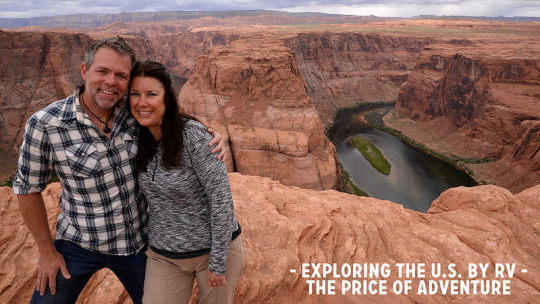
The Lure of Adventure All my life, Ive wanted to take a roadtrip across the United States. When I was young, I was lured by the adventure. I wanted to climb mountains, swim rivers, and explore canyons. The older I got, the more fascinated I became by the countrys regional differences. The U.S. is huge, a fact that most foreign visitors forget. Most American citizens dont even realize how big the country is. I wanted to see and experience it all. Although Ive dreamed of a cross-country roadtrip, its never been practical. As a boy, my family was poor. My parents didnt have money for something like this. As a young adult, I couldnt afford it either. For a long time, I was deep in debt. Besides, where would I find the time? I had to work! To top things off, my wife had zero interest in driving cross country. But in my forties, a curious set of circumstances came together to move my epic roadtrip from dream to reality. One day in early 2014, my girlfriend Kim asked me out of the blue, What do you think about taking a cross-country roadtrip? What did I think? Hell yeah! is what I thought Making a Plan As Kim and I began to discuss this adventure, our biggest concern was money. As a financial writer, Im acutely aware that every dollar I spend today is roughly equivalent to seven dollars I could have in retirement. Every day, I preach the power of saving. I wanted to keep our trip as cost-effective as possible. (Besides, Kim would have to quit her job as a dental hygienist in order to travel a huge financial sacrifice.) My goal was to keep our costs under $50 per person per day. In fact, I had high hopes we could do the trip for $33 per person per day (for a total of $24,000). But the U.S. is expensive. How could Kim and I make this happen? From the start, we knew hotels were out. Even cheap lodging would be far too expensive for us to stay within budget. Personally, I liked the idea of bicycling across the country like my friends Dakota and Chelsea have done. Kim wasnt keen on the idea. (Nor was she willing to make the trip by motorcycle despite being a die-hard Harley girl.) After a lot of research, and after talking with Chris and Cherie from Technomadia, I came to a conclusion: The best balance of cost and comfort would come from crossing the country in an RV. With this bare outline of a plan, the true trip prep began. Searching for Bigfoot After deciding to travel by RV, there were more questions to answer. Neither of us had experience with recreational vehicles. Among other things, we needed to figure out: Should we buy a truck and a trailer?Would it be better to buy a motorhome and tow my 2004 Mini Cooper?What about new or used? With used, you never know what youre getting. But a new RV costs $80,000 or more and loses value quickly.How much space did we need? What kinds of amenities? After crunching the numbers, there was an obvious best choice for us. If we bought a used motorhome, we could tow a car we already owned while (we hoped) avoiding a big hit from depreciation. In fact, if we were diligent every step of the way, it might even be possible to resell our RV after the trip and recoup most of what wed paid for it! We spent the autumn of 2014 patiently sifting through Craigslist ads for used motorhomes. We visited dealerships. We attended the local RV Expo. We walked through dozens of models searching for the right fit. Some were too long. Some were too short. Some were too fancy. Many were run-down and in a state of disrepair. Finally, in early January 2015, we found the perfect rig: a 2005 Bigfoot 30MH29RQ. (Translation: A 29-foot motorhome with a queen bed in the rear.) The owner wanted $38,000 for it a fair price. He wouldnt budge when I tried to negotiate, but I was okay with that. My research revealed he was actually selling a slightly better model, one worth a few thousand dollars more than he was asking. We bought it. [embedded content] Over the next two months, Kim and I prepped Bigfoot for departure. We spent $2000 making minor repairs and installing a towbar on the Mini Cooper. We cleaned the motorhome from top to bottom. We took weekend test trips to RV parks around Oregon and Washington. When all was said and done, wed invested $40,000 to get our caravan ready for the road. Into the West Kim and I left Portland on the morning of 25 March 2015, my forty-sixth birthday. We sped through Oregon we love the state, but were both familiar with it and entered northern California. We spent our first week on the road exploring the Redwoods and weaving through wine country.
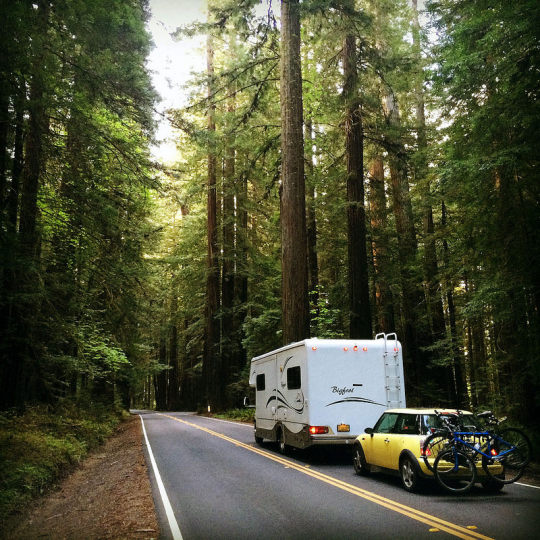
Along the way, we got a crash course in driving a motorhome. Near Cloverdale, California we took a wrong turn onto a cliff-side gravel road. We stopped immediately. Good thing, too. Turns out a week earlier some other poor soul had driven his RV over the side of the cliff. East of Sacramento, we took another wrong turn and found ourselves driving down a narrow dike road during rush hour while high winds buffeted the RV. Very scary. At times we felt like Lucy and Desi in The Long, Long Trailer, but after a couple of weeks Kim and I had learned how to handle our motorhome, both on the road and off. [embedded content] Early in the trip, our expenses were out of sight. We ate out too often. We bought too much wine. We did too many touristy things without searching for discounts. We rationalized that since we were visiting all of these new places (and might never return), we might as well pay to experience them to the fullest. This was a once-in-a-lifetime adventure, after all. The problem, of course, was that lots of fun costs lots of money. Ten days into the trip, our average spending was over $120 per day (or over $60 per person per day) almost twice what wed hoped to spend. Yikes! We tightened the purse strings. We stopped eating out so much and cooked in the motorhome. (We cook a lot at home normally, so this wasnt a tough transition.) We bought a National Parks pass, perhaps the best purchase of our entire trip. (For an $80 one-time fee, you get one year of unlimited access to all sorts of government-owned sites.) We learned to entertain ourselves at night with books and boardgames and a hard drive filled with old movies and an iPad filled with comic books.
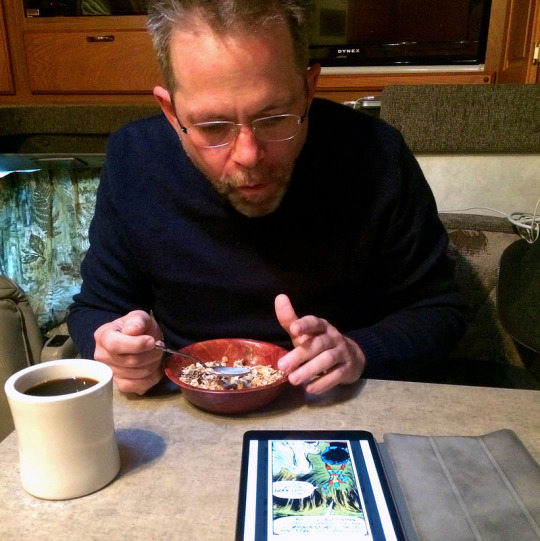
During our 33 days in California, we marveled at the states vast variety of terrain. We drove through forests and deserts, skirted ocean cliffsides and walked across mountain streams. We hated L.A. traffic not recommended when youre in a motorhome towing a car but enjoyed almost everything else.
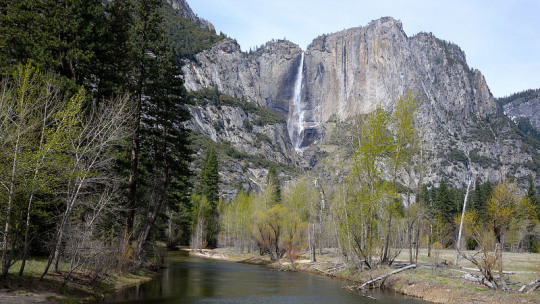

We loved Arizona even more. Maybe we had low expectations, but we were blown away by the magnificent scenery of the Grand Canyon state. For nineteen days, we basked in the warm spring sun and admired the colorful rock formations.
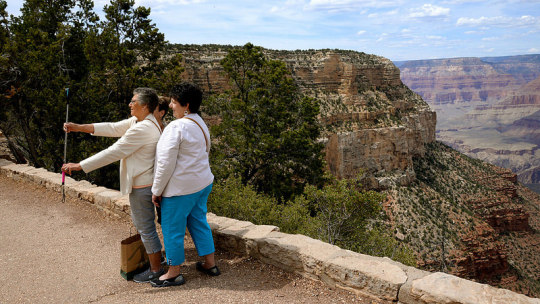
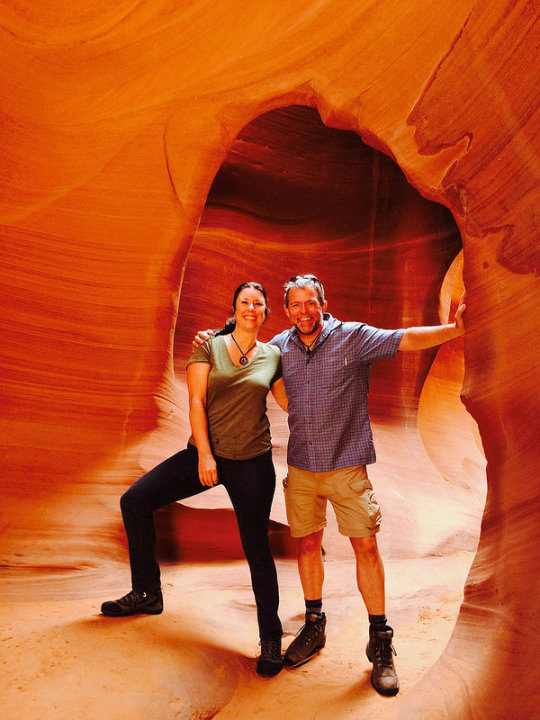
It was in Arizona that we discovered the joys of drycamping (or boondocking). For the first seven weeks of our trip, we mostly stayed in RV parks and campgrounds. At $20 to $50 per night (with the average park costs around $35), lodging was our biggest expense by far. Drycamping costs nothing. All you do is find a spot where you can legally park for the night National Forest land, a friends driveway, certain businesses and casinos and set up camp. You dont have access to electricity or fresh water, but thats okay. The beauty of an RV is that its self-contained. (Our Bigfoot had a generator for electricity and a 63-gallon freshwater tank.)

After boondocking only once during our first 50 days on the road, we managed to live off the grid for 33 of the next 80 nights. Once we began pinching pennies, our travel costs plummeted. We werent spending $120 per day anymore. Our average daily spending fell to $50, which lowered the trip average to about $80 per day. A Costly Repair With all this frugality, did we feel like we were depriving ourselves? Not at all! As we made our way from Arizona to Utah to Colorado, we found we could still afford wine and an occasional restaurant meal. Plus, we were paying to do a lot of touristy things, such as soak in the hot springs in Ouray and ride the narrow-gauge train from Durango to Silverton. At the end of May, we stopped for a week to visit family and friends near Denver. During this break, our RV costs dropped to zero no fuel or lodging expenses while we stayed with Kims mother and hung out with Mr. Money Mustache which allowed us to spend a little more on fun. Good thing too because Fort Collins has a great beer scene.
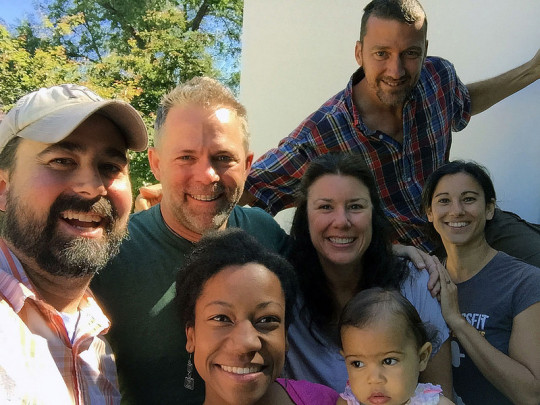
We hit the road again in early June, making our way into Wyoming to visit Yellowstone and the Tetons. We zipped over to Idaho to spend time with Kims father in Sun Valley. From there, we drove north into Montana to lounge around Flathead Lake and explore Glacier National Park. Costs stayed low as we crossed Montana to enter the beautiful Black Hills of South Dakota.

After celebrating Independence Day in Deadwood, our average daily spending for the trip was about $84. We felt good about that number. Itd be nice if it were lower, but $42 per day per person seemed reasonable. At that rate, the trip would cost us $30,000 for the entire year. On July 8th, the tenor of our trip changed. So did our costs. We were cruising across the vast emptiness of central South Dakota when the motorhomes engine overheated. We pulled off to give it a rest. The oil level looked fine, but I added more just in case. It didnt help. An hour down the highway, the engine seized up completely. Turns out Bigfoot had spun a bearing and the engine was toast. (Also turns out that spun bearings are not uncommon with this particular engine.)
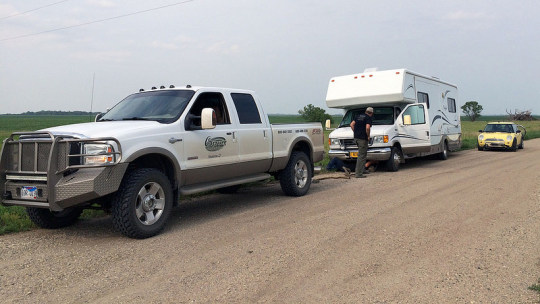
Unfortunately, we were in the middle of nowhere. The nearest town was Plankinton, South Dakota (population 707). Fortunately, the folks in Plankinton were friendly. The owners of the local garage diagnosed the problem and ordered parts. Meanwhile, we got to know the owners of the only RV park in town. We spent ten days drinking beer with Plankintonians while exploring nearby attractions such as the Corn Palace and the real-life homestead of Laura Ingalls Wilder.
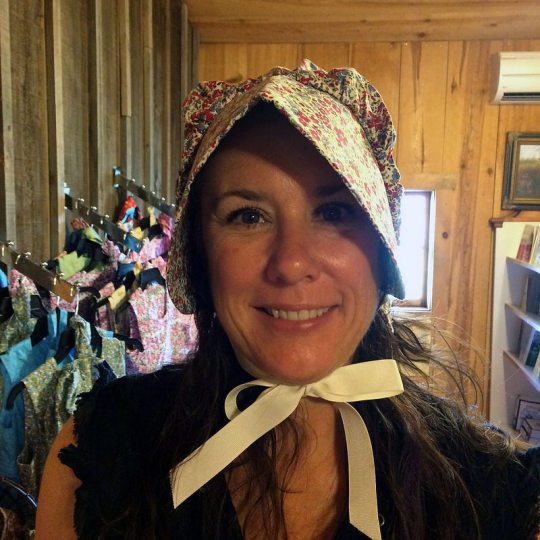
In the end, the engine repair cost $7751.39. Ouch! We did not count this against our daily trip budget but instead factored it into our overhead, much like we had with the purchase price of the RV. (You might choose to account for it differently.) The Expensive East When the new engine was ready, we waved good-bye to our new friends in Plankinton. We drove through Minnesota to Wisconsin, where we spent a week in the Great North Woods. (At the recommendation of world traveler Gary Arndt, whom we had lunch with near Milwaukee, we took a boat ride out to view the amazing Apostle Islands.)
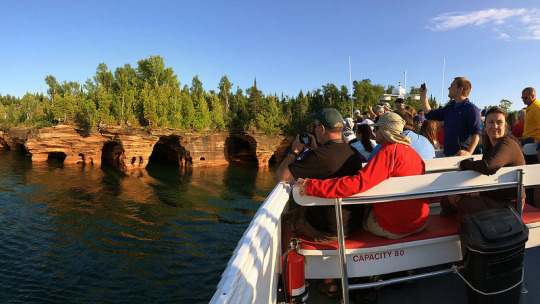
After eating our fill of Wisconsin cheese, we crossed into Michigans upper peninsula and then drove south to Indianas Amish country, where we rested for a week. (We also took the time to dart into Chicago for an overnight trip.) From there, we moved to Indianapolis and Cincinnati. As we made our way east, we noticed some interesting changes. First, there were fewer opportunities for boondocking. Theres less government-owned land in the East than there is in the West. (The western U.S. is largely government land, which means lots of places to camp for free.)Second, while gasoline prices were lower in the east, everything else was more expensive. RV parks were more expensive. Groceries were more expensive. Beer and wine were more expensive. Restaurants, especially, were more expensive. Our average daily spending started to creep upward. By the time we reached Ohio in mid-August, we were shelling out $120 per day again. After 150 days on the road, the average for the entire trip was $93.48 per day (or $46.74 per person). By this point it was clear that we couldnt spend a year on the road for our initial $24,000 budget. (You might, but we couldnt. Not while enjoying the lifestyle we wanted.) Even $30,000 for the year seemed unlikely. We revised our budget upward to $36,000 (or about $50 per person per day) not counting the expensive engine repair. We had plenty in savings, so we could afford to stretch some, but we still wanted to spend as little as possible. From Cincinnati, we traveled to beautiful West Virginia, then north to Cleveland. After that, we hopped over to Niagara Falls, where we camped for a few days at a winery. (We helped bottle brandy and bought a few bottles of wine in exchange for firewood and a place to park.)
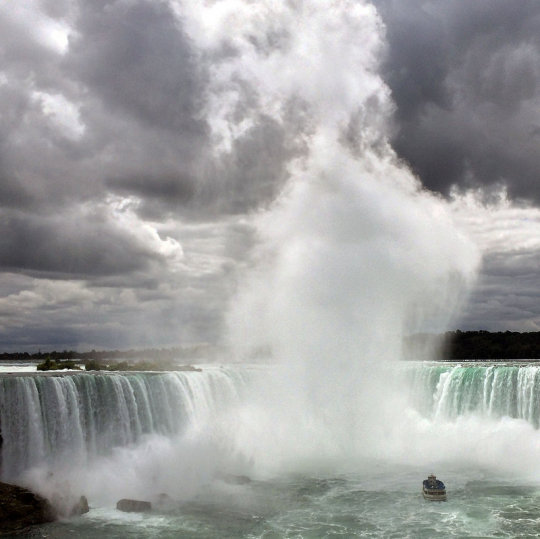
Stopping in Savannah During September, we sort of lost our steam. The enthusiasm wed had at the start of the trip petered out. Instead of exploring Pennsylvania, New Jersey, and North Carolina, we holed up in the RV and worked. It might sound crazy, but we missed being productive and making money! Being hermits saved us money, of course, but we felt like we were wasting an opportunity. After much discussion, we decided to take a break. We spent a week driving around the eastern seaboard, looking for a place to park for the winter. We fell in love with Savannah, Georgia, so we rented a condo and put the RV in storage. For six months, we lived a relatively normal life. Kim found full-time work as a dental hygienist, and I launched Money Boss (which Ive been folding into Get Rich Slowly since re-purchasing this site).
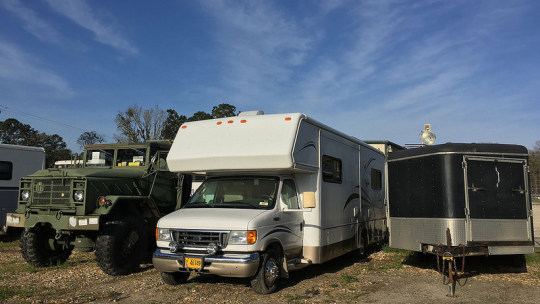
Our six months in Savannah were interesting. I had never lived outside of Oregon, so I suffered some culture shock. I always say that Im relatively conservative for the Portland area but that still makes me pretty liberal for anywhere in the southeastern U.S.! While in Savannah, we didnt just work. We made sure to have some fun too. Over Christmas, we flew to New York City for a long weekend, where we got to hang out with some of our favorite money bloggers. In February, we took a couple of weeks to tour the state of Florida, from Jacksonville to Tampa to Miami to Key West to the Kennedy Space Center.

Important note: By this time nearly one year into our trip Kim and I had both started packing on the pounds. Sad but true. We were eating great food and drinking great beer everywhere we went, and we were out of our exercise routine. Not good. After returning from Florida, we began planning for our return trip to Potland. It had taken us six months to make it from the Pacific to Atlanta. It seamed reasonable to budget the same amount of time for heading home. Old Pros If this were a travel blog, Id cover the return trip in depth. A lot of fun stuff happened during our final three months on the road. But this is a money blog, and Im trying to focus this article on the financial side of our journey. As a result, Im going to gloss over a lot. Financially, not much exciting happened. From the start, the return leg felt different. For one thing, we were old pros at the whole RVing thing by this point. At the start of the trip, everything had been new and exciting and even a little scary. A year later, however, Kim and I had things down to a science. We were no longer freaked out by little problems. On our first day back on the road, one of our headlights went out. No problem! Kim promptly repaired it.

The return trip felt different too because we spent less time with friends and family. While we did stop to see people along the way, we didnt have nearly as many contacts in southern states as we had in the north. Also, we spent much more time in state parks during the drive home. Traveling east, our camping spots had been varied. Sometimes, we parked in driveways of friends or family. Other times, we did drycamping on Forest Service land. Many of our campsites were located in Thousand Trails parks, which means they were essentially free. (Kim had access to an annual pass through her father.) But these options were few and far between in the Southeast, so we learned to love state parks, which are cheap and plentiful all over the United States. (State parks can get busy on holiday weekends, but otherwise are nearly empty especially midweek.) Finally, we changed the pace of our travel. On the outbound leg, we moved camp every two or three days. (We moved every 2.84 days, to be precise.) But going home, we intentionally slowed down. We tried to say four or five days in each location. (Until we picked up our puppy in Oklahoma about which, more in a moment we moved every 4.25 days.) In short, we stayed in each location nearly twice as long on our way west as we had on our way east. The Journey Home We had intended to spend six months driving home, just as wed spent six months getting to Savannah. That was the plan. We knew that our first two months would be spent carving an S through the southeastern United States. And, surprisingly enough, those two months went as we thought they would. We left Savannah at the end of March and drove to Asheville, North Carolina. (This town is like a training ground for hipster who arent ready for the West Coast, I observed.) We visited Dollywood and Great Smoky Mountains National Park in Eastern Tennessee. We dallied a few days in Nashville home to the worst drivers we encountered on the entire trip (no joke!) where we had a lot of fun immersing ourselves in country music culture. I was pleased to see the Taylor Swift exhibit at the Country Music Hall of Fame!

One of our favorite stops on the entire trip came in Lexington, Kentucky. For one, we got to hang out with friends for the first time in months. More than that, northern Kentucky is beautiful, filled with rolling green hills and horse pastures. Kim and I spent our fourth anniversary as a couple watching the races at Keeneland. And, of course, we sampled the Bourbon trail. [embedded content] From Kentucky, we drove west to St. Louis, then to central Missouri. My grandmother was born near Lake of the Ozarks, so I spent my time there trying to imagine what it must have been like for her as a girl 100 years ago. (By the way, did you know that the Ozark Mountains are the opposite of most mountains? Most mountains are formed when land thrusts up from the Earths crust. The Ozarks were formed by erosion when the vast inland sea that once occupied the space between the Rockies and the Appalachians drained away.) Our next stop was special. In late April 2016, we drove into northeast Oklahoma to visit my cousin Gwen and her family. She and her husband Henry moved from Oregon many years ago, and they now own a 100-acre creek hollow outside Tahlequah, Oklahoma. (Tahlequah has two claims to fame. First, its the endpoint of the Trail of Tears. Second, its the setting for Where the Red Fern Grows. In fact, one scene in the book takes place on my cousins property!)
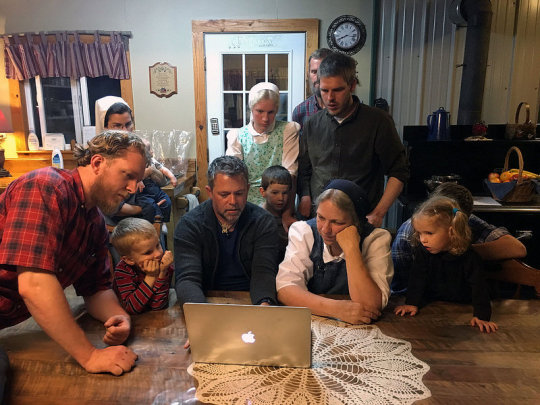
From Tahlequah, we doubled back on ourselves, turning east. This part of our trip was educational, to say the least. We got to see some of the poorer parts of the country. We spent a couple of nights in beautiful Hot Springs, Arkansas, for instance. Hot Springs was once a booming resort town, popular with tourists from the East Coast. Today, the downtown area is a hollow core of what it once was (although there are a lot of people doing their best to save it). Memphis was even worse. Kim and I spent several days in the Memphis area, driving down into Mississippi to travel the Blues Highway. This part of the U.S. is poor. Its infrastructure roads and services and so on is falling apart. It was shocking. (About a month after we drove the Blues Highway, we stayed a few days in Natchez, Mississippi, a few hundred miles south. Conditions in that region were even worse.) Our eastward extent ended in Huntsville, Alabama, where we enjoyed spending time with my college roommate and his boyfriend. From there, we headed south to the Gulf of Mexico, which we followed from Gulf Shores, Alabama to New Orleans.
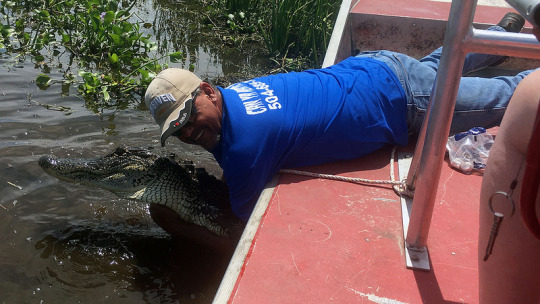
Kim and I loved southern Louisiana. The culture is distinct. The people are friendly. The food is amazing. It was here that we realized our favorite parts of the United States are those that retain a distinct character. You see, much of the U.S. has become homogenized. Indianpolis could be Orlando could be Sacramento could be Cleveland. No knock on any of these cities, but theres a sameness about them despite the unique aspects of each of them. Cities like Miami and New York and New Orleans, however, feel very different. Theyre unique. They have a unique culture, and they cling to it in the face of pressure to conform. As a result, theyre the most fun places to visit. (In each case, we believe this is because the population of these places is so diverse.) Our leg across the Mississippi to Houston was interesting. And frustrating. It was the Friday of Memorial Day weekend 2016, and the heavens opened up. It rained and rained and rained. Texas isnt equipped to handle so much rain. There was flooding everywhere, and roads became impassable. What ought to have been a five-hour drive to our campground turned into eight or nine hours of struggling to get where we wanted to go. We had to change plans and camp at the first place we could find with open space.
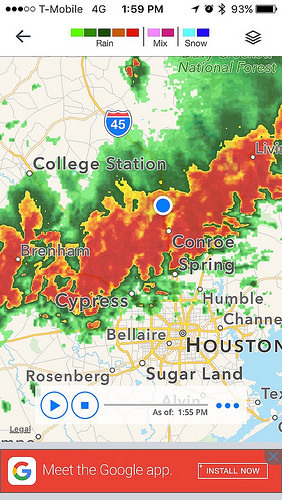
As you know, Texas is h-u-g-e. I mentioned earlier that the United States is larger than most folks realize. Well, Texas is too. During our nearly two weeks there, we visited Houston, San Antonio, Austin, and Dallas. Even with all of that driving, we barely scratched the surface of the state. The Home Stretch At this point, we were just over two months into our planned six-month return trip. We had planned to head toward west Texas, then revisit some of our favorite western spots from the previous year. That plan changed when: The couple who had been watching our condo in Portland found a home of their own. The extended housesitting gig worked out well for them because they were between places. It gave them time to be patient and purchase the perfect house. But once they found it, they were eager to leave. (And understandably so.) As a result, we needed to return to Portland sooner than anticipated.We got a dog. When wed stopped in Tahlequah, Oklahoma in late April, Kim fell in love with a litter of puppies. Can we take one home? she asked. At the time, I argued against it. But over the next few weeks, she whittled down my defenses. By the time we reached Dallas just a few hours from Tahlequah I agreed we could get a dog. So, after our time in Dallas, we returned to the 100-acre creek hollow where my cousin lives. We picked out our puppy (which we named Tahlequah, naturally) and spent a few days getting her used to the RV. When we felt like she was ready, we hit the road making a bee-line directly for home.
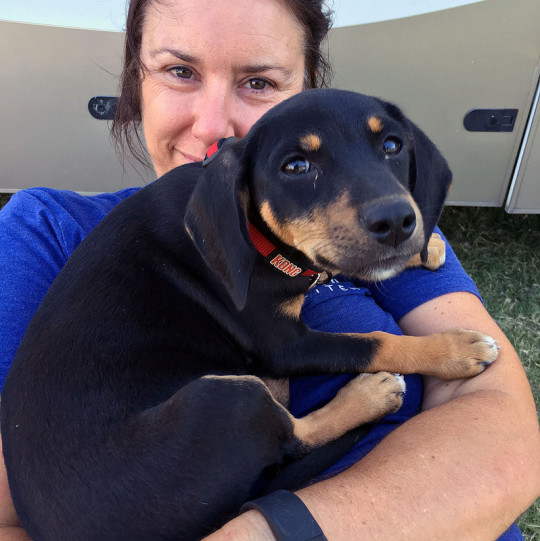
But even when youre trying to make tracks in an RV, things still take time. Despite the fact that we were rushing the last part of the trip, it took us three weeks to get from northeastern Oklahoma to northwestern Oregon. We spent our first two nights with the puppy in tiny Kingman, Kansas. There, we enjoyed one of our favorite campsites: An entire country fairground where we were the only guests. We had the run of the place, which was awesome because we could get the puppy used to us and we could get used to her. Plus, the fairground was cheap cheap cheap. Note: By the way, we found this location with our copy of the book Free and Low-Cost Campgrounds, which was a godsend on the trip. Although were all accustomed to great cell service in cities, the reality is that most of the U.S. has shitty coverage. Theres just no need for it in sparsely populated areas, and most of the U.S. is sparsely populated. (This fact surprised me, by the way. For some reason, I thought the reality was population density but the opposite is true.) As a result, when youre doing an extended road trip, you need important info in print format.
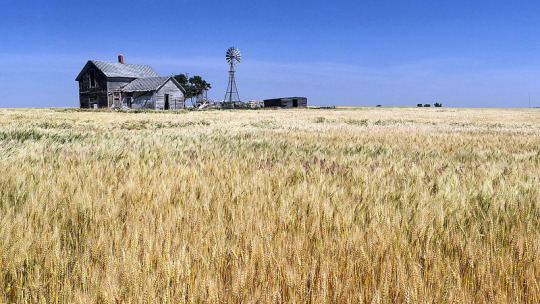
From Kansas, we drove through the most barren stretch of our entire trip eastern Colorado to visit Kims mother in Fort Collins (and to see our pal Mr. Money Mustache once more). Then we burned rubber (literallytwo of the RV tires started to fall apart!) to make it to her father outside Boise. We spent the last two days of the trip visiting my brother in central Oregon, then on 29 June 2016, we pulled into Portland. At long last, we were home.

Culture Shock at Home Once Kim and I returned home, we experienced unexpected culture shock. After fifteen months of what was essentially an extended holiday (despite the fact we both worked in Savannah), normal life feltwell, normal life felt crazy. We were overwhelmed by the busy-ness of it all: the pace, the scheduling, all of the requests for time and attention. Why is this so tough for us? I asked after a couple of weeks at home. I dont know, Kim said. But it sucks. She was right. It did suck. About that time, I read Guardians of Being, a short book that mixes the philosophy of Eckhart Tolle with the animal art of Patrick McDonnell (from Mutts). Tolle, of course, is best known for his massive bestseller, The Power of Now, which encourages readers to get out of their heads and be more present in the moment. I was struck by this quote from Guardians: Most of us live in a world of mental abstraction, conceptualization, and image making a world of thought. We are immersed in a continuous stream of mental noiseWe get lost in doing, thinking, remembering, anticipating lost in a maze of complexity and a world of problems. While we were on the road, Kim and I lived in the Now. We were always present in the moment. We might have vague plans for where we wanted to be in a few days or a few weeks, but mostly we made things up as we went along. Where do you want to go next? Kim might ask, and then wed pick a spot. Where should we camp tonight? I might ask as we drove to the new town, and Kim would find a campground. What should we do for dinner? Should we visit that park? This site is awesome lets stay a few more nights. Nearly everything we did was spontaneous. We had no plans or commitments and it was wonderful. But back home, even without jobs to go to and few plans, the pace of modern life was staggering. We were always doing something with somebody. We scheduled appointments and anticipated commitments. We had to-do lists. We went to the gym three mornings a week, took the puppy to puppy classes, agreed to help colleagues, and so on. There was so much going on that there was never a chance to simply be present in the Here and Now. We had no margin in our lives. And the stuff! There was so much stuff! We had few possessions in the motorhome; we didnt miss what we did not have. At home, even though we had less than many folks, we were surrounded by tons of stuff. Tons of stuff! So many books! So many clothes! So many dishes! So much in every closet and cupboard. Kim and I were overwhelmed because we made a sudden transition from doing and having very little to doing and having a lot. All of the stuff and commitments comes with mental baggage. It takes brainwidth. Even after we had settled down, we found it tough to resume normal life. Kim went back to work four days a week as a dental hygienist. I resumed writing and giving speaking gigs. We did our best to return to our old lifebut it all felt wrong, like old clothes that no longer fit. So, we bought a place in the country. We have access to the city when we want it. Mostly, though, we stay at home and enjoy the relaxed pace with our ever-growing zoo. It feels good to not be racing around so much. It feels nice to just be, you know?

Getting Rid of Bigfoot Aside from the culture shock, Kim and I faced another problem upon our return. We no longer needed a motorhome. It was time to sell our loyal companion. For some reason, we thought selling the RV would be simple. It wasnt. From the time we started the process which was eight or nine months after returning home it took a year to actually get rid of Bigfoot. We started by listing the rig on both Craigslist and RV Trader. Plus, I created a sales page that contained more information than we could fit in a normal advertisement. We waited. And waited. And waited. Nobody seemed interested. Maybe were asking too much, Kim suggested after a few months with zero responses. We had purchased the RV for $38,000, remember, and then spent nearly $8000 to replace the engine. By our reckoning, we had a $46,000 vehicle on our hands (and wed made other upgrades too!) so we wanted $40,000 in return. Nobody wanted to pay $40,000. We lowered the price to $38,000. As a result, we received a few email inquiries, but nobody came out to see the RV in person. We lowered the price to $35,000. We got more email inquiries, but still nobody wanted to view it. When we lowered the price to $32,000, we finally got a reasonable number of responses and had a few people come out to take a look at the motorhome. We also learned that the price wasnt the only thing holding people back. To us, the fact that Bigfoot had a new engine was a selling point. Turns out, thats a red flag to a lot of people. Their reasoning is that if the engine went out once, itll go out again. This baffles me, but thats what people were telling us. Weve got to get rid of that thing, Kim said last Christmas. I know, I said. Its an albatross. Lets lower the price to $30,000. After we lowered the price to $30,000, we immediately had buyers interested. We were flooded with email. One guy drove out right away to look at the RV. I cant have money for you until Monday, he told us. Will you hold it for me? Given our inability to sell the thing, you might think wed take him up on his offer. But we didnt. The next day, a couple drove seven hours from Sandpoint, Idaho to look at the motorhome. Weve been looking all over for a Bigfoot! they told us. After several hours of inspecting the rig, they made us an offer: $28,000. We accepted. After three years of ownership, we were rid of the RV. The Great Reckoning So, this is a money blog. The most important question to answer is: How much did this trip cost us? Great question. We dont have a precise answer, but Ill share as many numbers as I can so that you can decide whether a trip like this would be worth it for your family.

Because Im a money nerd, I keep detailed stats on most of my life. The RV trip is no different. I have a spreadsheet with detailed trip info, and I published trip stats at my travel blog. Here are some highlights: During 283 days on the road, we spent 371.3 hours (15.5 days total!) driving the RV across the U.S. We put 17,250 miles on the motorhome and 17,718 miles on the Mini Cooper. Thats a total of 34,968 miles driven about 1.5 times the circumference of the Earth! Between the two vehicles, we drove an average of 120 miles per day.Everyone wonders about fuel efficiency in an RV. Well, it sucks. We had hoped to average 10 miles per gallon; we got 7.7. (No, replacing the engine didnt make things better.) The motorhome consumed 2202.6 gallons of fuel at an average price of $2.48 per gallon. It cost us 32 cents per mile to drive that beast and thats only counting gasoline.On the first leg of the trip, we spent a total of $17,137.07 for budgeted daily items. Fuel and routine maintenance for the motorhome and car ate up a third of that budget. Food (both groceries and restaurants) consumed another third. We spent $3086 on lodging, which works out to $16.24 per night. The remaining $2000 was spent on alcohol, fun, and miscellaneous expenses. (Our stats for the return leg werent as detailed.)About two-thirds of our nights were spent in campgrounds or RV parks. We drycamped 19% of the time on the way east (but not once on the way home). We spent 18% of our nights in somebodys home or driveway. We visited 38 states. We spent the most time in California (33 nights) and Colorado (25 nights). We loved them all.Arizona and West Virginia were the two most beautiful states we saw on our trip, although the area around Jackson, Wyoming was probably the single prettiest place. Charleston, South Carolina and Lafayette, Louisiana had the best food (the Midwest had the worst) and Ommegang Brewery in Cooperstown, New York had the best beer. The worst drivers? Orlando, Savannah, and especially Nashville. To me, the most important numbers is what Id call our base costs. These are the combination of gas and lodging, the costs for keeping the RV in action. During the first leg of our trip, our base costs were $35.09 per day (with an overall cost of $90.20 per day). During the second leg, our base costs were $41.25 per day (and I didnt keep track of total costs). How much you would spend beyond these base costs is, well, up to you. Obviously, we were spending an extra $50 to $60 per day, or about $25 to $30 per person. This includes food and fun but it does not include the cost of the RV and/or maintenance. (Our net cost for the RV was $10,000 $38,000 purchase price, $28,000 sale price plus the $7751.39 for engine replacement.) And dont forget that we spent about $2000 to furnish the RV before setting out, plus had to make miscellaneous repairs. My guess (and this is only a guess) is that our total cost for for the RV trip outside daily expenses was $23,500. This equates to about $80 per day. If you add this to our ongoing daily expenses, you get a total of $170 per day. Lets round that to $175 per day. [Note that these are corrected numbers. My original calculation of daily cost forgot the engine repair. Oops.] All told, to live like we did on the road which was living well it cost about $180 per day (or about $5400 per month) for two people. Im sure it can be done for less. And we met tons of people who spend much more. I realize that not everyone can afford this sort of adventure. Nor do many people have the ability to pick up and leave their lives for six or twelve or eighteen months. In other words, this isnt the sort of trip that everyone has the time and money to make happen. But for those who do have the resources, exploring the United States by motorhome can be relatively affordable especially if your engine doesnt need to be replaced!

On the Road Again? Heres the thing: Our story is not unique. Theres this idea that RVing is only for old people with more time and money than sense. Sure, there are plenty of retired couples out there in brand-new $200,000 luxury motorhomes, but there are also a surprising number of younger couples on the road full time including couples with kids! Everyone we talked to reported the same thing: If youre careful, its perfectly possible to live large in a motorhome on a modest budget. There are plenty of awesome side-effects too. The trip strengthened my relationship with Kim. (If you can make things work in 245 square feet, you can certainly do it in a larger space!) It taught us that we need far less Stuff to live than we thought. The best side effect of all? Realizing just how awesome everybody is. Im not joking. The media has whipped us into a state of hysteria in this country. The Left hates the Right. The Right hates the Left. Nobody talks or takes time to understand the other side. Thats bullshit, to be honest. During our fifteen months away from Portland, we had two bad experiences and they werent even that bad. (Maybe the people were just having off days?) Universally, everybody was friendly and polite and fun. This morning, as I was finishing this article, Kim and I got to talking. Wouldnt it be fun to do a trip like that again? she asked. Maybe we should buy another RV. Haha. Maybe. I told her we should put it off until next year. Our adventure across the U.S. truly was the trip of a lifetime. What are you waiting for? If you too have always dreamed of an epic cross-country roadtrip, get cracking. Draw up a plan. Save your money. Make it happen.

Shares 348 https://www.getrichslowly.org/us-by-rv/
0 notes